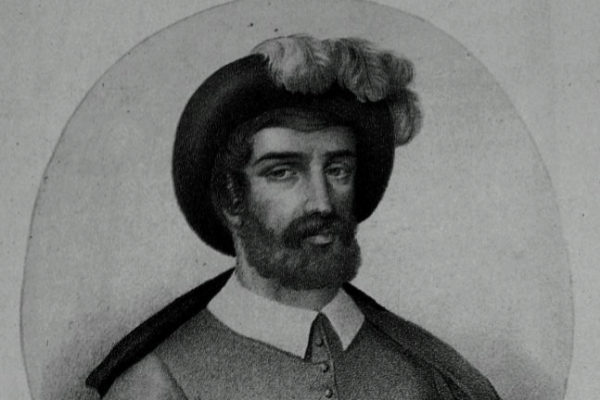- V Centenary.The miracle of Elcano
A document translated for the first time into Spanish demonstrates that Juan Sebastián Elcano imposed his criteria to decide the route with which he went around the world, over the course defended by two of his trusted men, the Greek pilot Francisco de Albo and Master Miguel de Rodas .
One of the translators of the document, Tomás Mazón , author of the website www.rutaelcano.com, explained to Efe that Elcano, "without bad vibes" with his officers, made his criteria prevail because he understood the cycle of the monsoon winds, that they were not favorable to the route defended by Albo and Rhodes by Malacca , the current Malaysia , and that belonged to Portugal , which in the end was "decisive".
Elcano also ruled out returning to Spain bordering Portuguese territories because he was afraid of being arrested, added Mazón, who translated the document with Braulio Vázquez Campos , of the General Archive of the Indies of Seville , and Cristóbal Bernal Chacón , expert in paleography and in the history of the expedition.
"From now on, the history of the expedition cannot be told without having this document in mind" which includes the interrogation of the Portuguese to two Spaniards who had hidden in the jungle, Mazón recalled.
The grumble Martin de Ayamonte , one of those arrested by the Portuguese, hid because he wanted to return to Spain with another of the ships of the expedition, the Trinity , who tried to do it without success in the east, and for fear of shipwreck in the West navigation planned by the Elcano.
The breakdown of the 'Trinity', discovered
In addition to the route decided by Elcano, the document confirms other data of the expedition: that Fernando Magallanes had a relative on board named Martín de Magallanes and that the captain general knew about the existence of a Portuguese army that was going to India , reason for which "maybe" they waited 41 days in Sanlucar de Barrameda ( Cádiz ).
The fault of the Trinity is also revealed for the first time: "The broken keel and a large hole next to the keel"; and the origin of two of the captains of the five ships that sailed from Seville 500 years ago: Juan Serrano , of Fregenal de la Sierra (Badajoz), and Juan de Cartagena , "knight of Burgos".
In addition, it is confirmed that Nao Victoria , captained by Elcano when he left for Spain from Timor and with half the world ahead, needed to give "the pump (de bilge) 12 times a day and 12 times a night."
The document is called the Auto of the questions that were asked of two Spaniards who arrived in the fortress of Malaca from Timor in the company of Álvaro Juzarte, captain of a reed , which Mazón located online at the Torre do Tombo National Archive (Lisbon) when I was looking for information from Magellan.
A "mystery" unnoticed so far
The text was discovered and transcribed in 1933 by the Portuguese historian António Baião , and also later by Neves Águas in 1986, although it has gone unnoticed for historiography until now as the "indispensable source that is", what Mazón, an engineer by profession and passionate about history, considered a "mystery."
Until now it was known from the Relationship of Deceased that on February 5, 1522, Victoria de Ayamonte and the gunman Bartolomé de Saldaña , on the island of Timor, fled from the nao Victoria "without being felt."
However, the translated document says that both, a short time later, were found there by a Portuguese ship and transferred to the fortress of Malacca (now Malaysia), where Martin de Ayamonte was questioned about how he had reached Timor. His testimony, taken on June 1, 1522 , was written in Portuguese by a scribe and ended up later in Lisbon.
"The master and the pilot, who were Greek, wanted to come by Malacca, and the captain, who was a Biscayan (synonymous with Basque), did not want to, and his intention was, according to Martin, to go to the Maldives to correct (fix) their nao, and from there they would go their way to those parts. And more does not say, "concludes the document.
According to the criteria of The Trust Project
Know more- history
The final interview Susana Sueiro: "In the Valley of the Fallen there may have been buried more Republicans than Francoists"
Present! The next exhumation, that of Falangist José Antonio Primo de Rivera
This was really America the day Christopher Columbus arrived

